The U.S. National Aeronautics and Space Administration (NASA)'s next Mars mission known as InSight, which is on track for a 2018 liftoff, will focus on examining the deep interior of Mars, the agency announced on Monday.
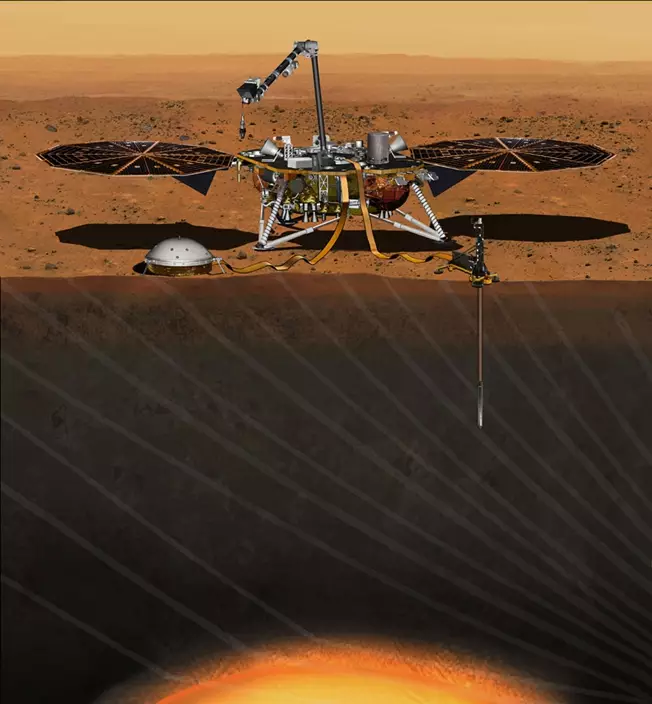
This artist's concept from August 2015 depicts NASA's InSight Mars lander fully deployed for studying the deep interior of Mars. Image credit: NASA/JPL-Caltech
The long form of InSight's name is Interior Exploration using Seismic Investigations, Geodesy and Heat Transport. The mission is expected to launch sometime in the five weeks following May 8, 2018 from Vandenberg Air Force Base, central California, with a Mars landing scheduled after Thanksgiving in 2018. It supposed to be the first interplanetary launch in history from America's West Coast, according to the agency.
Click to Gallery
The U.S. National Aeronautics and Space Administration (NASA)'s next Mars mission known as InSight, which is on track for a 2018 liftoff, will focus on examining the deep interior of Mars, the agency announced on Monday.
The long form of InSight's name is Interior Exploration using Seismic Investigations, Geodesy and Heat Transport. The mission is expected to launch sometime in the five weeks following May 8, 2018 from Vandenberg Air Force Base, central California, with a Mars landing scheduled after Thanksgiving in 2018. It supposed to be the first interplanetary launch in history from America's West Coast, according to the agency.
"Because the interior of Mars has churned much less than Earth's in the past three billion years, Mars likely preserves evidence about rocky planets' infancy better than our home planet does," Bruce Banerdt, InSight principal investigator of the Jet Propulsion Laboratory (JPL) of NASA, said in a statement.
Within weeks after the landing, always a dramatic challenge on Mars, InSight will use a robotic arm to place its two main instruments directly and permanently onto the Martian ground, an unprecedented set of activities on Mars.
Another experiment will use radio transmissions between Mars and Earth to assess perturbations in how Mars rotates on its axis, which are clues about the size of the planet's core.
Information gathered by the NASA's next spacecraft will boost understanding of how all rocky planets formed, including Earth.
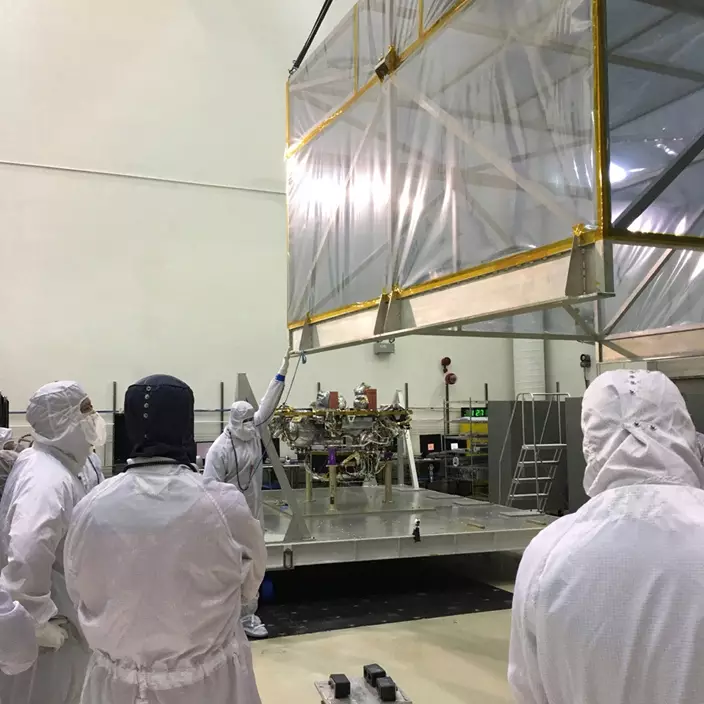
In a Lockheed Martin clean room facility near Denver in June 2017, members of the InSight mission's assembly, test and launch operations team remove the inner layer of protective housing that covered NASA's InSight spacecraft while the spacecraft was in storage after a launch postponement. Credit: NASA/JPL-Caltech/Lockheed Martin
"Because the interior of Mars has churned much less than Earth's in the past three billion years, Mars likely preserves evidence about rocky planets' infancy better than our home planet does," Bruce Banerdt, InSight principal investigator of the Jet Propulsion Laboratory (JPL) of NASA, said in a statement.
InSight is the first mission of NASA to investigate the deep interior of Mars and is part of a legacy of robotic exploration that is helping to lay the groundwork for sending humans to Mars in the 2030s.
The mission will place a stationary lander near Mars' equator. With two solar panels that unfold like paper fans, the lander spans about 6 meters, according to NASA.

The Mars lander portion of NASA's InSight spacecraft is lifted from the base of a storage container in preparation for testing, in this photo taken June 20, 2017, in a Lockheed Martin clean room facility in Littleton, Colorado. Credit: NASA/JPL-Caltech/Lockheed Martin
Within weeks after the landing, always a dramatic challenge on Mars, InSight will use a robotic arm to place its two main instruments directly and permanently onto the Martian ground, an unprecedented set of activities on Mars.
The two main instruments are a seismometer and a heat probe. Shielded from wind and with sensitivity fine enough to detect ground movements half the diameter of a hydrogen atom, the seismometer will record seismic waves from "marsquakes" or meteor impacts that reveal information about the planet's interior layers. And the heat probe is designed to hammer itself to a depth of 3 meters or more and measure the amount of energy coming from the planet's deep interior.
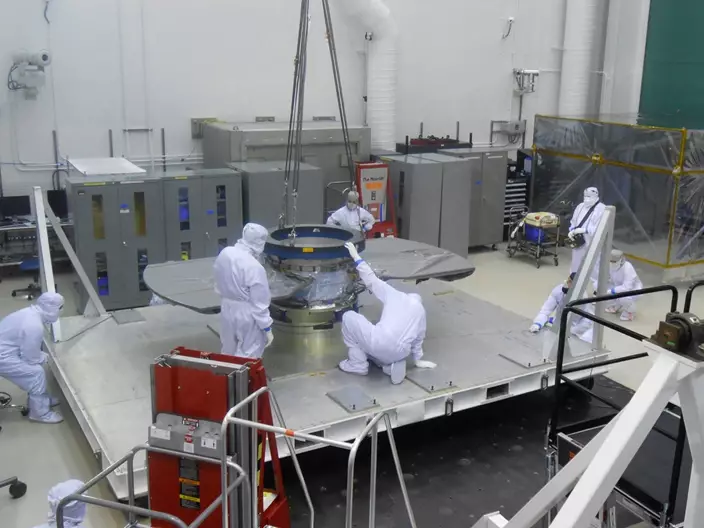
Lockheed Martin spacecraft specialists check the cruise stage of NASA's InSight spacecraft in this June 22, 2017, photo. Credit: NASA/JPL-Caltech/Lockheed Martin
Another experiment will use radio transmissions between Mars and Earth to assess perturbations in how Mars rotates on its axis, which are clues about the size of the planet's core.
The mission was originally scheduled to launch in March 2016, but NASA suspended launch preparations in December due to a vacuum leak in the lander's prime science instrument. A redesigned vacuum vessel for the instrument has been built and tested, then combined with the instrument's other components and tested again.

This view shows the top of the science deck of NASA's InSight Mars lander, with the mission's seismometer instrument, heat probe instrument, robotic arm and other gear installed. Credit: NASA/JPL-Caltech/Lockheed Martin
The instrument redesign and two-year delay add 153.8 million U.S. dollars to its previous budget of 675 million dollars for the mission, according to the agency.
Lockheed Martin Space Systems is assembling and testing the InSight spacecraft in a clean room facility near Denver, Colorado. The Mars lander's science payload also is on track for next year's launch.
"The lander is completed and instruments have been integrated onto it so that we can complete the final spacecraft testing including acoustics, instrument deployments and thermal balance tests," Stu Spath, spacecraft program manager at Lockheed Martin, said in a press release.
UNITED NATIONS (AP) — Russia and Ukraine on Monday traded blame before the United Nations Security Council for the attacks on Europe’s largest nuclear power plant, which the head of the International Atomic Energy Agency said have put the world “dangerously close to a nuclear accident.”
Without attributing blame, IAEA Director General Rafael Mariano Grossi said his agency has been able to confirm three attacks against the Zaporizhzhia Nuclear Power Plant since April 7.
“These reckless attacks must cease immediately,” he told the Security Council. “Though, fortunately, they have not led to a radiological incident this time, they significantly increase the risk … where nuclear safety is already compromised.”
The remote-controlled nature of the drones that have attacked the plant means that it is impossible to definitively determine who launched them, Grossi told reporters after the meeting.
“In order to say something like that, we must have proof,” he said. “These attacks have been performed with a multitude of drones.”
Zaporizhzhia sits in Russian-controlled territory in southeastern Ukraine and has six nuclear reactors.
Fears of a nuclear catastrophe have been at the forefront since Russian troops occupied the plant shortly after invading in February 2022. Continued fighting between Russian and Ukrainian forces — as well as the tense supply situation at the plant — have raised the specter of a disaster.
Ukraine and its allies on Monday again blamed Russia for dangers at the site, with the United States saying, “Russia does not care about these risks.”
“If it did, it would not continue to forcibly control the plant,” U.S. deputy ambassador Robert Wood told the Security Council, which met at the initiative of the U.S. and Slovenia.
Russia, for its part, said Ukraine was to blame for the attacks.
“The IAEA’s report does not pinpoint which side is behind the attacks,” Russia’s U.N. Ambassador Vassily Nebenzia said. “We know full well who it is.”
“Over the last few months, such attacks not only resumed,” Nebenzia said, “they significantly intensified.”
Ukraine’s ambassador to the U.N., Sergiy Kyslytsya, called the attacks “a well-planned false flag operation by the Russian Federation,” which he alleged Russia had designed to distract the world from its invasion of its neighbor.
The Zaporizhzhia facility is one of the 10 biggest nuclear plants in the world. Fighting in the southern part of Ukraine where it is located has raised the specter of a potential nuclear disaster like the one at Chernobyl in 1986, where a reactor exploded and blew deadly radiation across a vast area.
Neither Russia nor Ukraine in recent months has been able to make significant advances along the 1,000-kilometer (620-mile) front line crossing eastern and southern Ukraine. Drones, artillery and missiles have featured heavily in what has become a war of attrition.
Russia and Ukraine have frequently traded accusations over the Zaporizhzhia plant.
The most recent strikes did not compromise the facility, which is designed to withstand a commercial airliner crashing into it, the IAEA said.
The plant’s six reactors have been shut down for months, but it still needs power and qualified staff to operate crucial cooling systems and other safety features.
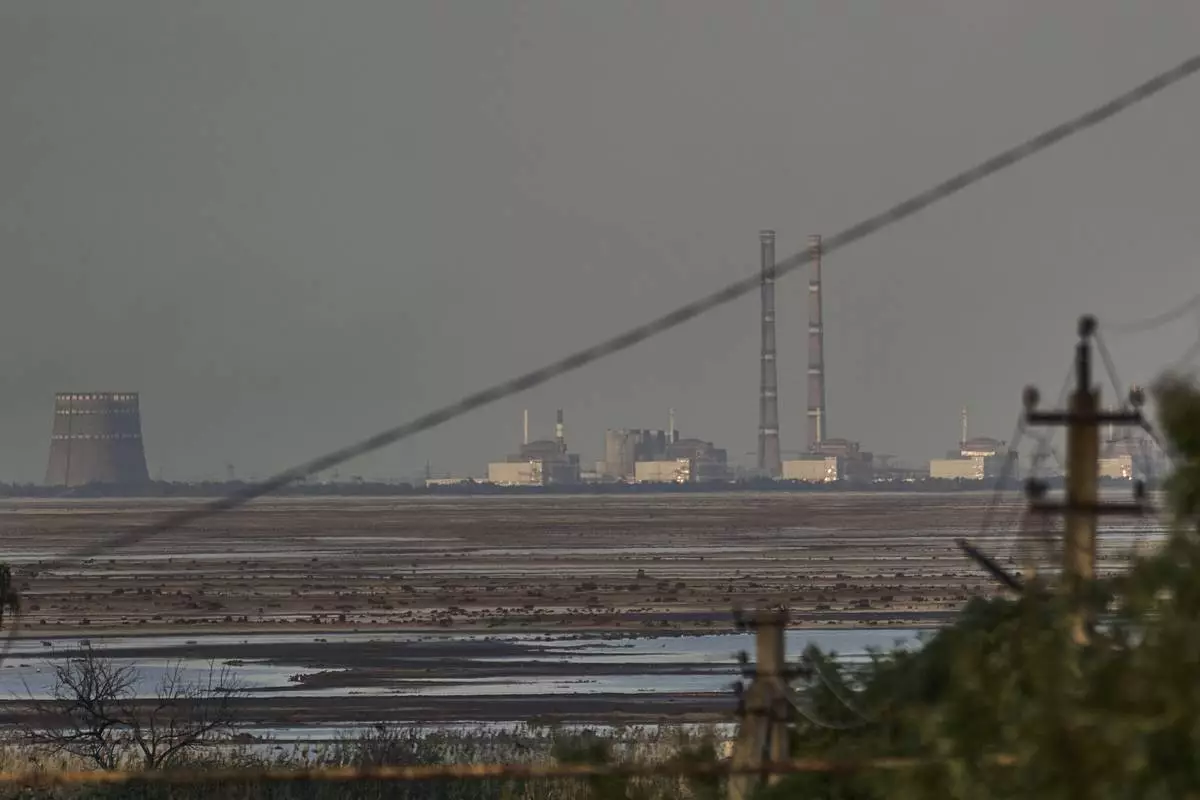
FILE - The Zaporizhzhia nuclear power plant, Europe's largest, is seen in the background of the shallow Kakhovka Reservoir after the dam collapse, in Energodar, Russian-occupied Ukraine, Tuesday, June 27, 2023. Officials at the Russian-controlled Zaporizhzhia Nuclear Power Plant said that the site was attacked Sunday April 7, 2024, by Ukrainian military drones, including a strike on the dome of the plant’s sixth power unit. (AP Photo/Libkos, File)
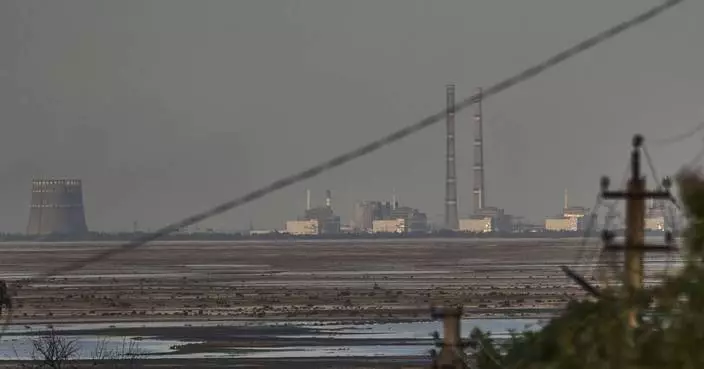
IAEA warns that attacks on a nuclear plant in Russian-controlled Ukraine put the world at risk
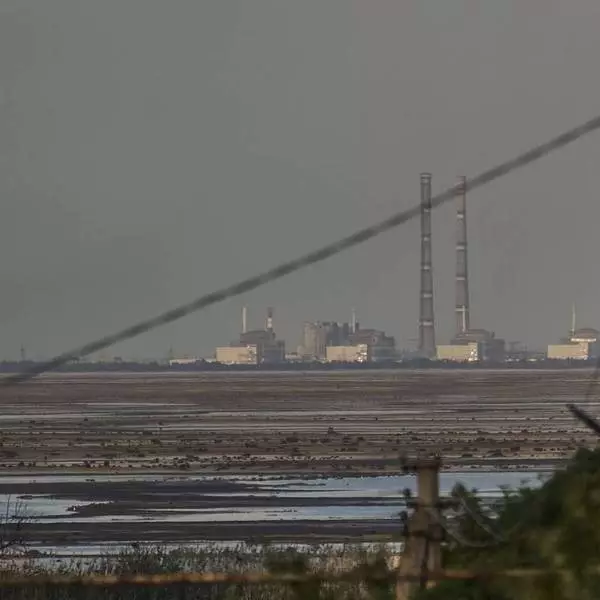
IAEA warns that attacks on a nuclear plant in Russian-controlled Ukraine put the world at risk











